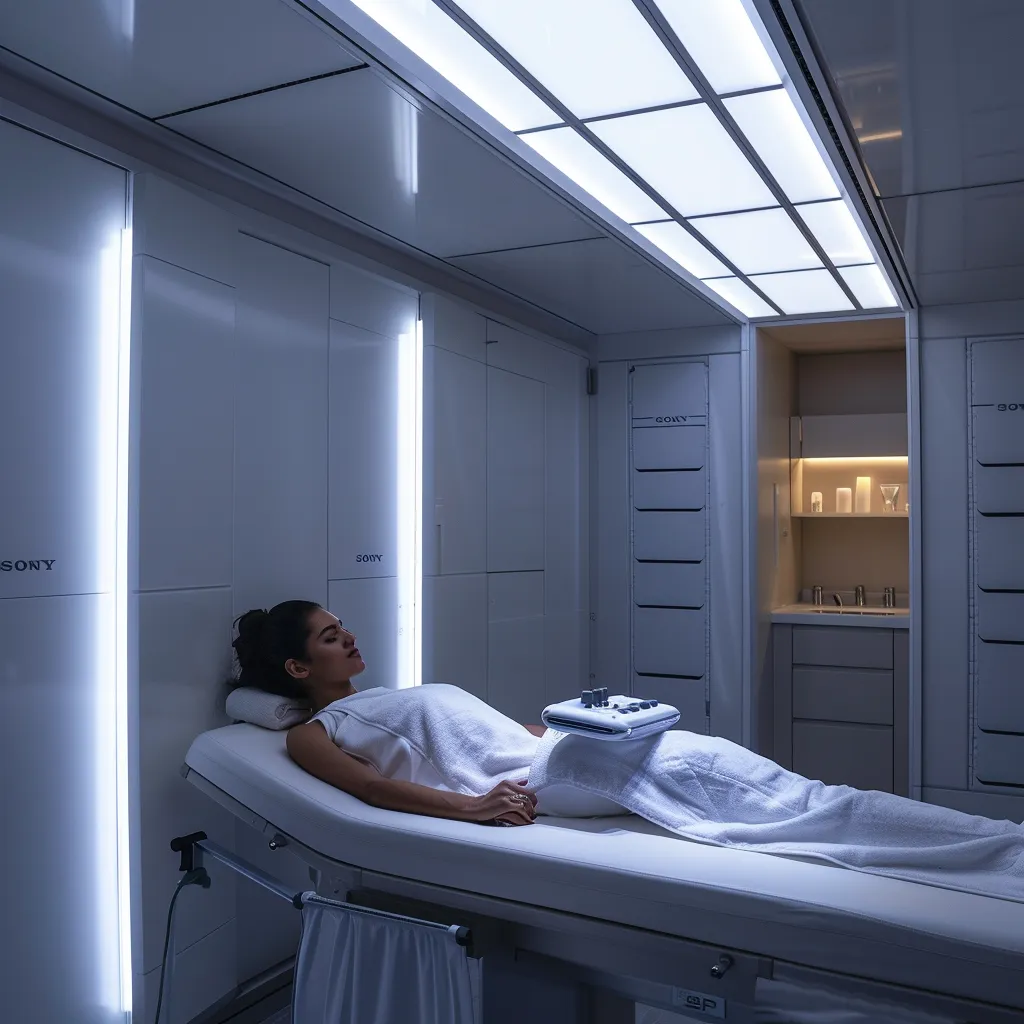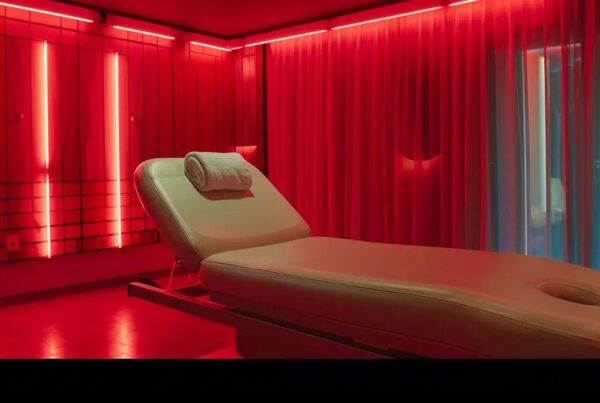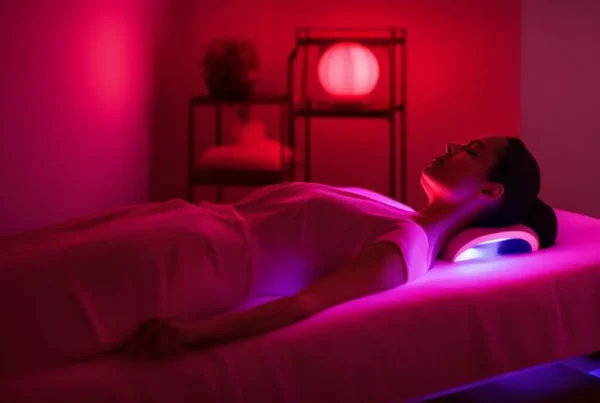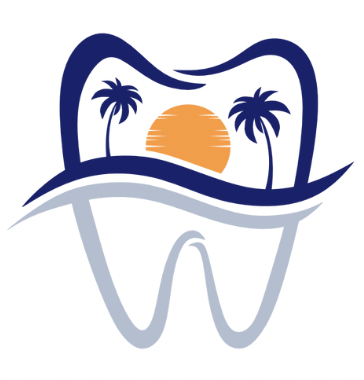“Not all light is visible—but that doesn’t mean it isn’t powerful.”
At Laguna Heights Dental, we’ve seen firsthand how emerging technologies like infrared therapy are changing the way we think about healing. While it may sound futuristic, this therapy has roots in real science. It’s being used in everything from medical offices to wellness clinics—and for good reason.
In this article, we’ll break down what infrared therapy is, how it works, and what kinds of benefits it can bring to your overall health. Whether you’re curious about pain relief, faster recovery, or inflammation reduction, infrared light might be a great option to explore.
What Is Infrared Therapy?
Infrared therapy uses infrared light wavelengths to penetrate deep into the body’s tissues. Unlike visible light, infrared is invisible to the human eye—but you can feel its effects. The warmth you experience from sunlight or a heating pad? That’s infrared at work.
There are different types of infrared light: near-infrared, mid-infrared, and far-infrared. Each penetrates the body to a different depth, which makes it useful for treating various tissues like skin, muscles, or joints. Near-infrared is especially popular in dental, medical, and skin-related treatments.
What makes infrared therapy unique is its ability to target deeper layers of the body without damaging the surface. It stimulates cell regeneration, enhances circulation, and helps reduce inflammation—making it a gentle but effective healing method.
How Does Infrared Therapy Work?
At the cellular level, infrared light interacts with mitochondria—those tiny “powerhouses” inside each of your cells. When exposed to infrared energy, mitochondria become more active. That leads to increased production of ATP (adenosine triphosphate), which your body uses for energy and repair.
This boost in cellular function helps accelerate healing and reduce pain, all without drugs or surgery. It’s one of the reasons infrared therapy is becoming a go-to option in physical therapy, sports recovery, and even dentistry.
Infrared also encourages vasodilation, which means your blood vessels widen slightly. This brings more oxygen and nutrients to damaged tissues while flushing out toxins and waste products.
Benefits of Infrared Therapy
One of the biggest draws of infrared therapy is how versatile it is. It can be used to treat localized pain or support overall systemic healing. And because it’s non-invasive and painless, it’s a great option for people of all ages and health backgrounds.
Some of the most well-documented benefits include:
- Reduced muscle and joint pain
- Improved blood circulation
- Faster healing of tissues and wounds
- Reduction of chronic inflammation
- Support for gum and jawbone health in dental applications
- Increased collagen production and skin rejuvenation
Many people also report better sleep, more energy, and less stress after consistent infrared therapy sessions.

Infrared Therapy in Dentistry
You might be surprised to learn that infrared therapy is finding a home in the dental world, too. At Laguna Heights Dental, we’re exploring its use for gum inflammation, jaw pain, and post-surgical healing. Near-infrared light can help reduce swelling after procedures and promote faster recovery in the tissues around implants, gums, and even nerves.
Infrared therapy is particularly beneficial for patients who experience discomfort after extractions, root canals, or implant placement. It’s a gentle, drug-free way to help your body heal more efficiently.
We love offering options that make our patients feel better, faster—and infrared therapy is a perfect example.
What to Expect During an Infrared Therapy Session
Infrared therapy sessions are painless, relaxing, and usually take between 10 to 30 minutes depending on the treatment area. You may feel warmth, but the treatment doesn’t burn or cause discomfort. Some devices use LED panels, while others use laser wands or flexible pads.
There’s no downtime afterward, so you can return to work or go about your day immediately. Many patients describe the experience as soothing and often request it again due to how comfortable it feels.
If you’re coming in for a dental visit and infrared therapy is part of your care plan, we’ll walk you through everything beforehand.
Is Infrared Therapy Safe?
Yes—infrared therapy is FDA-cleared for a variety of uses and has very few side effects. It’s a great option for patients looking for drug-free pain relief or enhanced recovery.
That said, it’s important to have the therapy administered by a trained professional who understands the correct dosage, frequency, and application. At Laguna Heights Dental, we tailor every session to your comfort level and health history.
If you have a history of certain medical conditions, such as active cancer or severe cardiovascular disease, let us know in advance so we can plan accordingly.
How Infrared Therapy Compares to Red Light Therapy
While infrared and red light therapy are often used together, they are slightly different. Red light therapy uses wavelengths between 620 to 750 nanometers, which are visible to the eye and mainly target skin-level tissues.
Infrared therapy, especially near-infrared (700 to 1400 nanometers), penetrates deeper. That makes it ideal for muscle pain, joint inflammation, or post-surgical healing. Red light is great for skin health and surface-level treatment, while infrared is better for deeper, systemic support.
Both are excellent tools—and in many treatments, they work best when combined.
Why Patients Love Infrared Therapy
Aside from the clinical benefits, one of the biggest reasons patients love infrared therapy is how it makes them feel. There’s no pain, no recovery time, and no side effects. It feels good during treatment, and many people notice lasting improvements afterward.
It’s also a great complementary option for people managing chronic pain, arthritis, jaw tension, or healing from dental surgery. At Laguna Heights Dental, we’re proud to bring this level of comfort and innovation into our care plans.
Ready to Try Infrared Therapy?
If you’re curious about infrared therapy or want to add it to your treatment plan, we’d love to talk. Whether you’re healing from a procedure or managing chronic discomfort, it could be the tool that takes your care to the next level.
Call Laguna Heights Dental today to schedule a consultation or learn more about how infrared therapy works. We’ll walk you through everything and tailor the experience to your unique needs.
Schedule your consultation Today!
Laguna Heights Dental 28202 Cabot Rd, Suite 600 Laguna Niguel, CA 92677 Driving Directions (949) 363-1200
See More Reviews From Laguna Height Dental. View information about local places in our community. Get Driving Directions to Our Practice
Questions Patients Ask
How often should I get infrared therapy treatments to see results?
The frequency depends on your specific condition and goals. For general inflammation or recovery, 2 to 3 sessions per week is often recommended at the beginning. Some patients see results after just a few visits, while others may benefit from ongoing therapy over several weeks. Once symptoms improve, many patients switch to maintenance sessions once every few weeks. We’ll customize your treatment plan based on your needs and how your body responds.
Can infrared therapy help with TMJ or jaw tension?
Yes! Infrared therapy can be very effective for relieving temporomandibular joint (TMJ) pain and jaw muscle tension. The light penetrates deep into the joint and surrounding muscles, helping reduce inflammation, ease muscle tightness, and improve circulation. Many patients find that after a few sessions, they experience less jaw stiffness, fewer headaches, and more comfort while chewing or speaking. It’s a safe and drug-free way to support TMJ treatment.
Are there any risks for people with dental implants or metal restorations?
Infrared therapy is generally safe for patients with dental implants, crowns, or fillings, especially when administered by trained professionals. However, because metal can absorb heat differently, we take extra care when applying light around those areas. You may feel warmth, but it shouldn’t be uncomfortable. As always, let us know if you experience sensitivity so we can adjust the settings. We’ll make sure everything is tailored for your safety and comfort.
Related Articles
Red Light Therapy, Red Light Therapy for Pain Relief, Red Light Therapy for Skin Health, Red Light Therapy for Weight Loss, Red Light Therapy for Athletic Recovery, Red Light Therapy for Oral Health, Red Light Therapy for Anti-Aging, Red Light Therapy for Hair Growth, Red Light Therapy Cost Factors, Benefits of Red Light Therapy, Red Light Therapy Devices, Infrared Therapy, LED Therapy Facial





